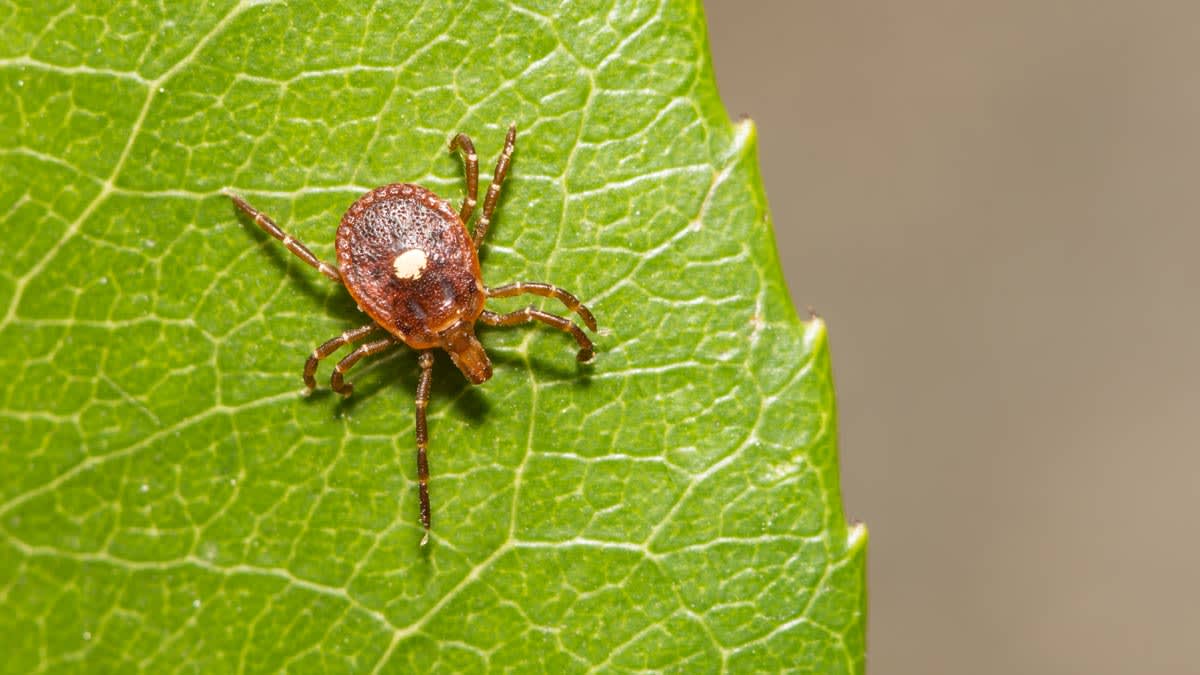
Bacterial Infection
Lone star ticks are the main vector for a few types of bacteria that can cause the disease ehrlichiosis. The Centers for Disease Control and Prevention usually receives reports of more than a thousand cases of ehrlichiosis each year, with a record of more than 2,000 cases reported in 2019.
Although that’s likely a significant underestimate of the true number of cases, it’s unclear to what extent people may experience asymptomatic or mild cases of the disease. Mild cases of ehrlichiosis resemble a number of other tick-borne diseases, causing symptoms such as fever, headache, muscle ache, nausea and vomiting, and rash, which is more common in children than in adults.
The antibiotic doxycycline, which is also used to treat Lyme, can be very effective. But if treatment is delayed, ehrlichiosis can be serious. Late-stage problems can include damage to the brain or nervous system, respiratory failure, and organ damage. In about 1 percent of cases, ehrlichiosis can be fatal.
Lone star ticks are also one of several tick species that can transmit the bacteria that cause tularemia, another quite rare but potentially fatal illness. Another disease transmitted by lone stars, called southern tick-associated rash illness (or STARI), resembles Lyme disease, but its cause—whether a bacteria or something else—is actually still unknown.
Viral Infection
Lone star ticks are thought to be the primary vector of an emerging tick-borne virus, Heartland virus. About 60 cases of Heartland virus had been documented as of 2022, mainly in Midwestern and Southern states, according to the CDC. A few of those cases have been fatal, says Gonzalo Vazquez-Prokopec, PhD, an associate professor in the department of environmental sciences at Emory University in Atlanta, who studies lone star ticks and Heartland virus.
It’s totally unknown, however, how many people may be experiencing mild or asymptomatic illness due to undetected Heartland virus. That’s in part because testing for the pathogen isn’t available anywhere except the CDC. So testing generally occurs only if a doctor thinks you may have it—which may occur only if other standard treatment for tick-borne diseases (such as doxycycline) proves ineffective.
One of the key mysteries Vazquez-Prokopec and other researchers are trying to solve is which animals are the “reservoir” for Heartland virus—essentially, the animal from which lone star ticks pick up the pathogen and go on to spread it to humans. With Lyme disease, for example, white-footed mice serve as the reservoir in nature, and knowing this helps researchers predict how the disease will spread.
Meat Allergy
This may be the lone-star-induced health problem you’re most familiar with, as awareness of it has spread in recent years. Scientists aren’t sure why, but in some cases, a bite from a lone star tick can trigger an allergy to a protein in red meat, called alpha-gal. (Not everyone who receives a bite from a lone star tick will develop the allergy, and it’s also not clear whether alpha-gal allergy can be caused by triggers other than a tick bite.)
Alpha-gal allergy can be difficult to diagnose because unlike essentially every other allergy, the reaction can be delayed by several hours after eating red meat. And though different people who develop the allergy will experience different levels of sensitivity to the protein, alpha-gal can also be found in other products made from mammals, including dairy products, gelatin, and even some medications. This can add to the difficulty of pinpointing the cause of a reaction.









